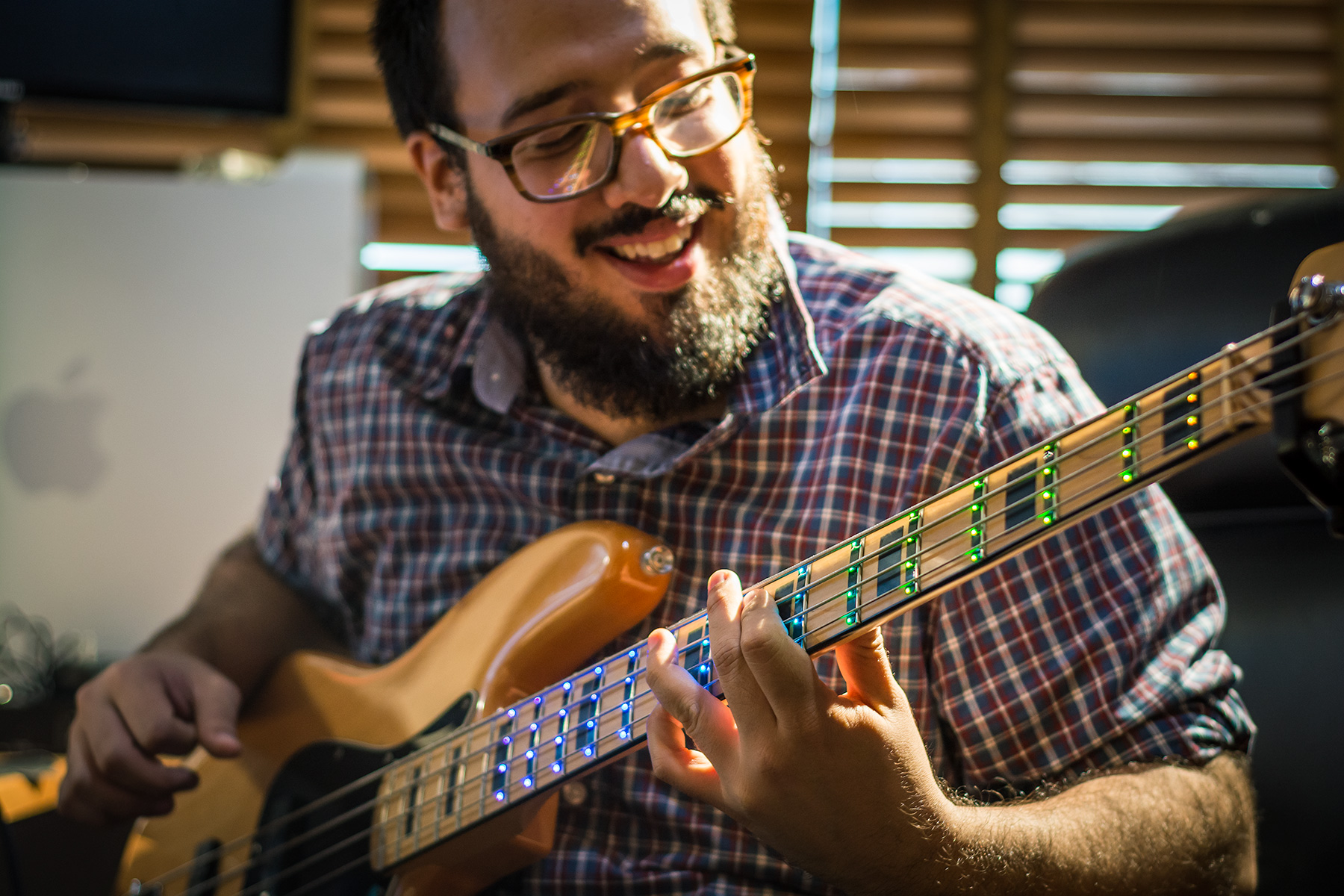Bass vs. guitar – which is right for you?
If you’re starting out as a new musician, choosing the instrument that’s right for you is crucial! Bass and guitar are similar-looking instruments, and either will be a lot of fun to play – but which one is right for you?
The basics:
Bass guitars have four strings, while regular guitars (usually) have six. The strings on a bass guitar are thicker, allowing them to hit lower notes. On both instruments, you can play scales, chords, and apply the same music theory you’d use for other instruments.
Guitar
Guitar players can choose between playing rhythm or lead – playing the chords of a song, or playing a solo above the main melody. Because a guitar has a higher pitch than a bass, it often cuts through the sound better.

If you’re a singer looking to accompany yourself with an instrument, guitar may be the better choice, since it’s closer in timbre to a human voice and easier to play chords that ring out clearly.
Acoustic guitars are also a good, portable option for musicians who want to play outside or bring an instrument to parties, etc. Acoustic basses exist, but because they have a lower pitch, they can be harder to hear without amplification.
Bass
Are you a rhythm enthusiast? Bass guitar works with drums or percussion to fill out the rhythm section of a band. Bassists help control the rhythm and pace of a song, building the sound’s foundation.

The bass adds a lower harmony that works with the guitar to give a song depth and intensity. It can also drive a song, like these songs with unforgettable bass lines.
Which is easier to learn?

There’s no simple answer to which instrument is easier to learn. Both instruments involve the same notes and scales, so you can choose to learn bass after learning guitar and vice versa.
Guitar involves slightly more memorization of chords than bass does, since it has six strings instead of four and relies more heavily on barre chords to get a variety of sounds.
Since bass guitars are longer, heavier, and have thicker strings, they might be harder to physically get used to playing, although with some practice it should get easier.

You can learn how to play both guitar and bass with Fret Zealot. Paired with the Fret Zealot app, the paper-thin LED strip lights up in coordination with lessons and tabs, making the learning process faster and easier.
Check out guitars and bass guitars with Fret Zealot pre-installed here!





































